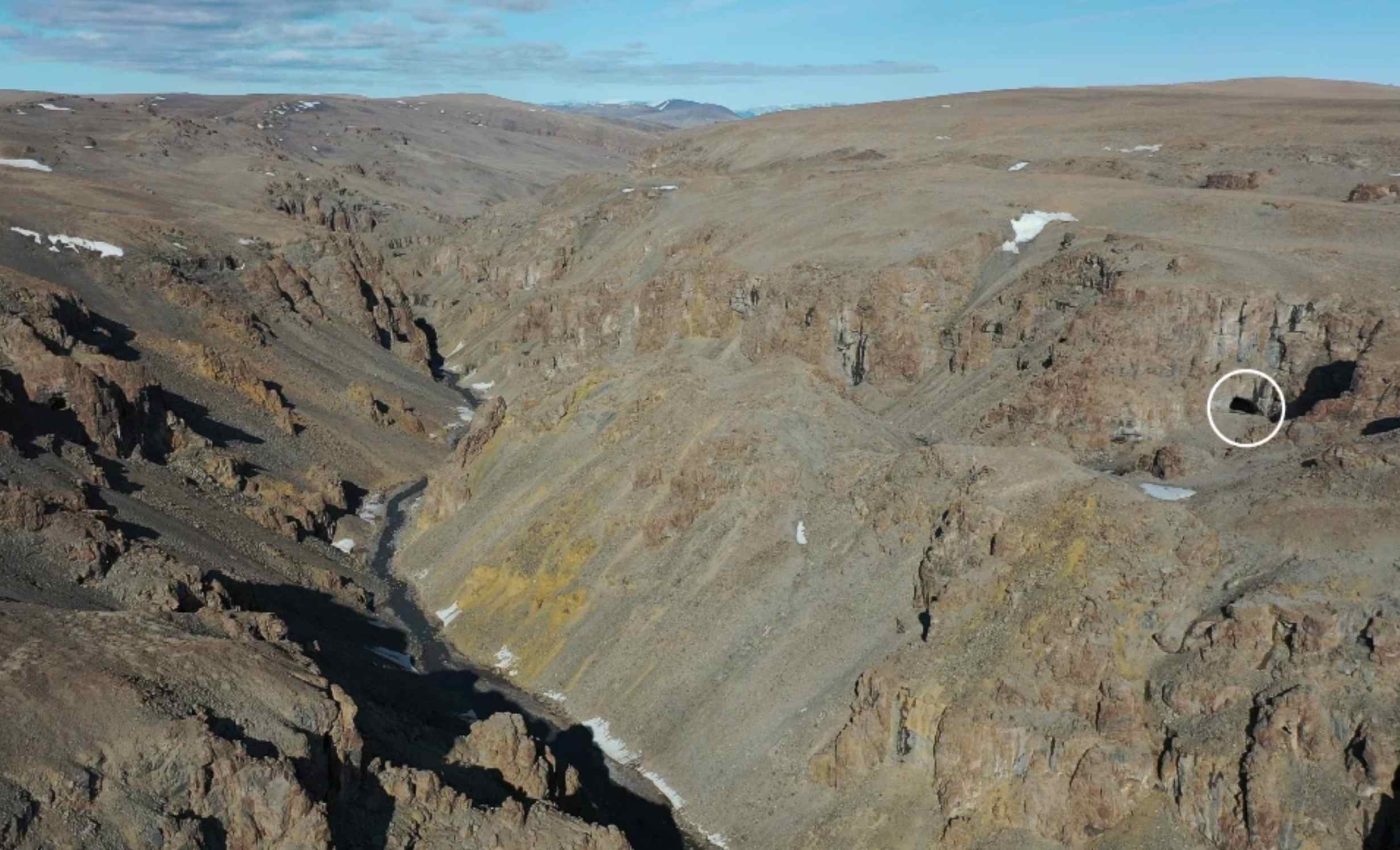
Greenland cave discovery reveals the Arctic temperature millions of years ago
Cave minerals from far northern Greenland show that the High Arctic once thawed and flowed with liquid water. The new record points to mean annual air temperatures roughly 25 degrees Fahrenheit warmer than today.
Those minerals grew between roughly 9.5 and 5.3 million years ago, a warm slice of the Late Miocene. The samples indicate brief swings to small glaciers between warm spells, revealing a region that shifted quickly when conditions changed.
Climate records in Greenland cave
The work was led by Gina E. Moseley at the University of Innsbruck. Her research focuses on reading speleothems, mineral deposits left by dripping or flowing cave water, to reconstruct Arctic climate.
Calcite layers in the Greenland cave formed only when unfrozen water seeped through the ground. That means the area lacked permafrost, ground that stays frozen for two or more years, during the growth periods.
The record identifies multiple warm and humid phases that ended when temperatures fell and small glaciers appeared. It is a rare land based archive from high latitudes that matches patterns long seen in ocean cores.
Researchers linked cave growth to nearby ocean warmth and to modest atmospheric carbon dioxide levels. The team reports that thaw and flowing water coincided with carbon dioxide at or above 310 ppm, a standard measure of concentration.
Reading climate in stone
Cave layers lock in oxygen and carbon isotopes that reflect temperature and moisture. Trace elements carried by meltwater add clues about dust, soil, and even brief advances of local ice.
One of the researchers described each cave as having its own personality, highlighting how distinct and unpredictable these hidden environments can be.
They noted that no two caves tell their stories the same way, and each one preserves a unique record of Earth’s changing climate..
Here, the personality is a stop and start diary of warmth, wetness, and short lived cold snaps. The cave’s chemistry shows soil and vegetation above the cave during growth, a sign that summers were not just warm, they were long enough for plants.
Layers also carry a signal of sea ice through sodium linked to marine aerosols. That signal swings in step with cycles in Earth’s obliquity, the tilt of the planet’s spin axis that alters how sunlight is spread across seasons.
Pushing the Arctic past thaw
The key threshold in this archive is not extreme. Episodes without permafrost occurred when carbon dioxide met or exceeded 310 parts per million, with local seas a bit warmer than now.
That matters because global levels today sit well above that minimum. Loss of permafrost carbon after thaw is effectively irreversible on century time scales.
The northern permafrost region stores roughly 1100 to 1500 gigatons of organic carbon. That pool rivals the amount of carbon now in the atmosphere, according to a foundational review.
When frozen soils thaw, microbes convert long stored organic matter into carbon dioxide and methane. Those gases warm the climate further, which can speed more thaw, a feedback that is hard to halt once under way.
Glaciers flickered on, then off
Between warm spells the cave stopped growing. Geochemical spikes tied to rock flour suggest brief local glaciation that shut down water flow.
When conditions warmed again, calcite returned, sometimes with a thin white layer that marks fresh meltwater. The on off character underscores how quickly a high latitude system can switch as ocean heat and sunlight patterns shift.
This flicker is consistent with a climate paced by orbital cycles. During parts of the Late Miocene, the timing hints that the Arctic and Antarctica even moved out of step before settling back into a more coordinated rhythm.
CO2, permafrost, and people
Today’s carbon dioxide already exceeds the Late Miocene threshold linked to thaw in this record. The lesson is plain: small changes in temperature can push the Arctic across practical lines.
That is not just a northern story. Permafrost terrain threads under roads, pipelines, and rural communities, and its carbon is part of the global budget that shapes warming targets.
The record also shows that land and ocean were tightly coupled. When nearby seas warmed a few degrees, the ground above the cave followed suit, and liquid water returned to the rock.
Lessons from the Greenland cave
Better dating of cave layers from other Arctic sites will tighten the timeline and the thresholds. Additional land records will test whether the 310 parts per million figure was a floor across the region or a local marker.
Models can then be checked against measured responses from past warm times that looked broadly like ours. That cross check is strongest when land and ocean agree, as they do here.
This cave turns a hidden corner of Greenland into a clear message. Past warmth at modest carbon dioxide lit the fuse on thaw, and it did not take much.
The study is published in Nature Geoscience.
—–
Like what you read? Subscribe to our newsletter for engaging articles, exclusive content, and the latest updates.
Check us out on EarthSnap, a free app brought to you by Eric Ralls and Earth.com.
—–













